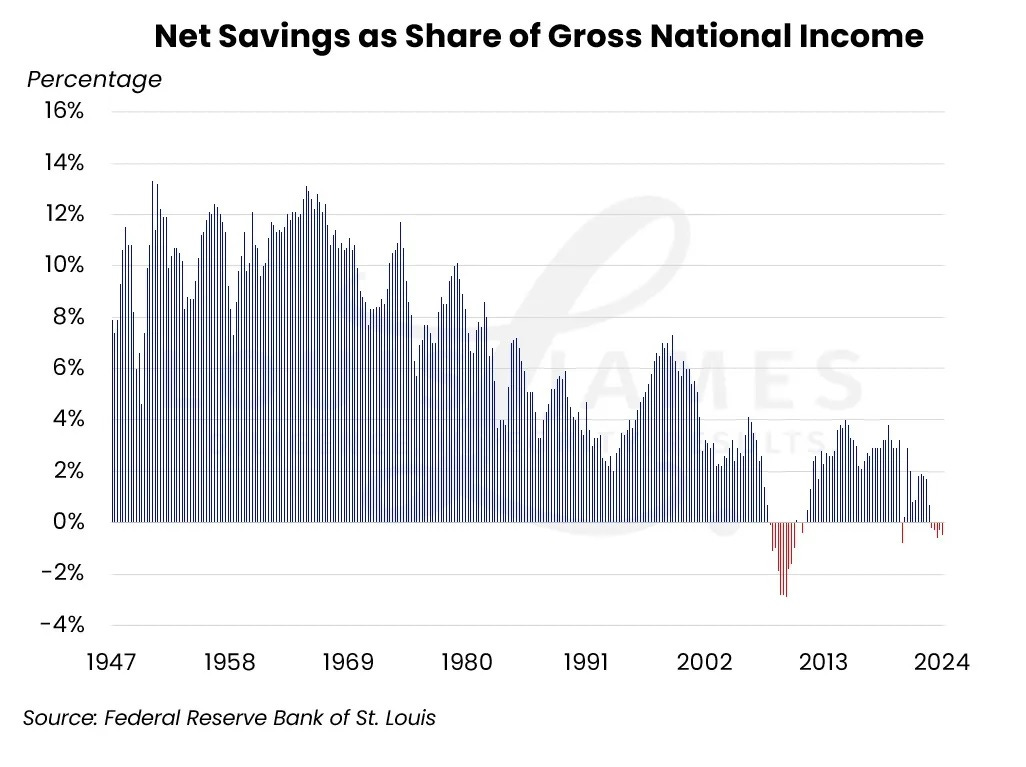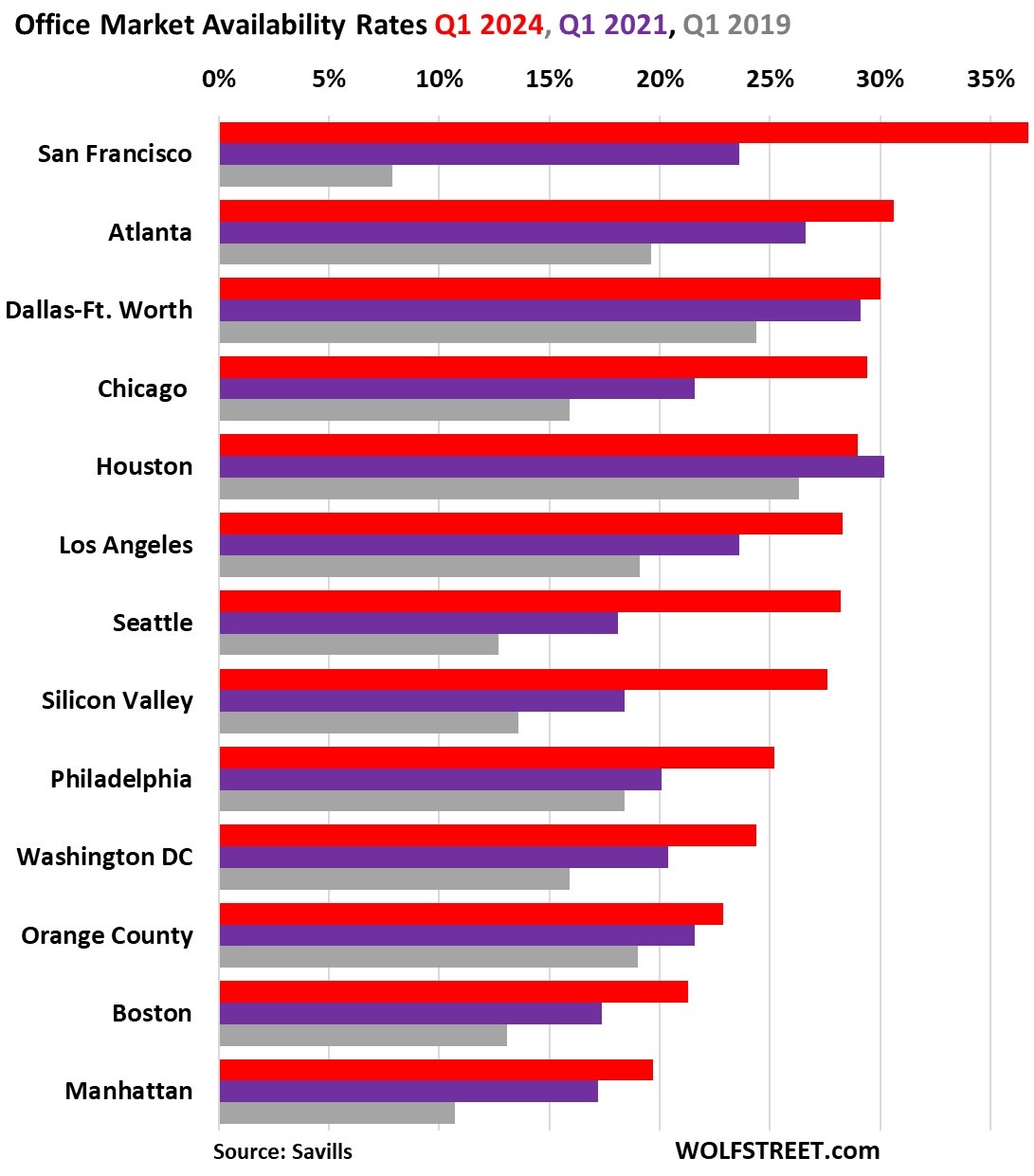The Dow tumbled fairly hard today (-400), but the real news is the reason it fell. According to CNBC, the stock market’s most troubled day in over a month is happening because Treasury yields have been rising and competing with stocks. Treasury yields started rising when the Fed started lowering rates; and, according to John Rubino, there may be no surer sign of a bond vigilante rebellion. Or, as he put it, “Bonds don’t trust the Fed.”
This “isn’t supposed to happen,” Rubino says:
When the Federal Reserve cuts short-term interest rates, long-term rates generally fall in tandem. But since the Fed’s “shock and awe” 50-basis point cut in September, bond yields have spiked….
Bond traders appear to doubt the Fed’s ability to lower rates and hold inflation in check. That’s bad in the long run since the only thing that gives value to a fiat currency is the market’s belief in central bank omnipotence.
(As I wrote yesterday, it will be the Fed’s mismanagement of its fiat money that does the dollar in, not some rising-star competitor. That will most likely happen because the Fed loses trust, but there won’t be some other currency that has risen to take its place. More likely a move toward gold and silver.)
Rubino points out that bond interest going the opposite way of the Fed is a problem right now because the long-rigged economy needs lower interest rates to continue. That is why the Fed is lowering. Even the Fed’s own writing today shows the big rate cut was due to the economy needing a lift, more than the Fed was letting on.
Today’s overleveraged economy really, really needs lower interest rates. Existing home sales, for instance, have fallen back to Great Recession levels….
In fact, another story in the news today is that housing sales just fell all the way back to 2010 levels, even as prices continue to edge upward.
And sales of big toys like boats and RVs — which are frequently financed — are cratering.
So, the problem with bond vigilantes taking interest rates the opposite way from the Fed because they don’t believe the Fed has beat inflation is that the Fed is not getting any of the economic stimulus it hoped to get from those cuts. I’ll lay out more on each of those details below.
Inflation keeps rising
The CNBC article focuses in on inflation as key to the rise in bond yields and today’s plunge in stocks:
Both the Dow and S&P 500 notched their third straight losing session…. The Nasdaq Composite lost 1.6%, ending at 18,276.65….
At its session high, the benchmark 10-year Treasury yield topped 4.25%, reaching its highest level since July 26….
Treasury yields have been soaring over the past month, even after the Federal Reserve began cutting interest rates in September. Some have pointed to recent economic data as a source for the move higher, while others have noted the potential of growing fiscal deficits in the U.S. under a second Donald Trump presidency.
(It’s not like a second Biden presidency under Kamala is going to be any better.)
The market is repricing the probability that the Fed can aggressively cut rates,” said Brent Schutte, chief investment officer at Northwestern Mutual Wealth Management. “There have been parts of the economy that haven’t felt the impact of rising interest rates yet, but the longer rates remain higher, the more different parts of the economy have to reprice to that reality … the economy is out of equilibrium.”
And there they align with Rubino in seeing the rise in interest rates as problematic for an economy that is out sorts. The key statement, though, is the reason both Rubino and CNBC give for bonds not cooperating: Bond investors are not buying the Fed’s baloney that its battle with inflation is close enough to over that it can start to lower interest rates. Bond investors are betting, as I have been prognosticating, that inflation is not going to cut the Fed slack to continue cutting interest rates.
Economic troubles slowly rising all over the place
Rubino points out some of the economic troubles that are forcing the Fed to slack off on interest rates. Here are some detail highlights of troubles of the kind that can be felt all over:
-
Polaris warns of challenging retail demand for its jet skis, snow mobiles, and ATVS. Down 23% in fact. These are fairly big-ticket consumer items. No longer is the Covid move out of towns sparking rampant buying of all-terrain vehicles.
-
US net savings as a % of GDP by households, businesses, and the government have been negative for 6 consecutive quarters. Gone also is a good part of the Covid paycheck savings plan. While savings from the massive splurge in government welfare over government’s forced lockdowns during Trump’s last year, which continued into Biden’s, lasted longer than anyone expected, it’s drying up. Savings have actually gone negative for six months, meaning people are tapping into them, and the only times they have gone negative at all since 1947 were during the Great Recession and then for one quarter during the start of Covid.
The fear that high interest rates would eventually break the economy was the Fed’s rationale for easing. With long rates rising again, the specter of bursting bubbles has returned.
Besides the economic troubles Rubino highlighted, a few additional implosions hit the headlines this morning in the form of Denny’s shutting down over a hundred restaurants, with numerous other restaurants listed as doing the same, and with TJI Friday’s being next to file for bankruptcy.
Here are some of those already on the list:
-
Red Lobster Management
-
Rubio’s Restaurants
-
Melt Bar & Grilled
-
Kuma Holdings
-
Tijuana Flats
-
Sticky’s Finger Joint
-
Boxer Ramen
Going back decades, this year is set to come second to only 2020 for the number of restaurant chains and operators declaring bankruptcy, according to BankruptcyData.com records reported by the WSJ.
The stealth recession is rising from the creeping economic tide
Ever watch the tide rise on a very flat beach where you can see the water’s edge seeping and winding along toward the shore? This is like watching a film of that in reverse where you can see the economy ebbing away and the dry ground of recession emerging.
While mainstream financial media, as the slave dog to the White House, keep reporting the story the White House wants everyone to hear (economy strong), even the Fed’s famous Beige Book tells a much different story. It’s a story of a stagflationary recession that just keeps slowly edging upward from the receding waters of commerce.
Zero Hedge lays out the real reason the Fed made a larger-than normal first rate cut:
Two weeks before the FOMC rate cut we titled our analysis of the latest report as follows: “Ugly Beige Book Reveals Economic Activity “Flat Or Declining”, Consumer Spending Slowing In Most Districts.” So one can see why Powell panicked.
That was back in September. Today, they have more:
Moments ago the Fed published its latest, October, Beige Book which indicated a continuation of the “ugly” sluggish conditions observed in September, and which on its own, will likely be sufficient to enable further rate cuts in coming months.
Let’s not say “enable” because rising inflation is not likely to enable them. So, the better word is “demand.” The receding economy will begin more notably demanding rate cuts, even as inflation more notably rises, demanding the Fed stop lowering rates and even return to raising them. And then we’ll have to see which force scares Fed governors and other FOMC voters the most, as they will have to choose their master.
If we go back to soaring inflation, the public and, therefore, politicians will be quite unforgiving about having to start the inflation fight all over again from where we started because neither the return to higher inflation nor the return of everything involved in fighting it sound any fun AT ALL. The Fed will lose a lot of public confidence if that happens.
According to the Fed’s latest report, economic activity on balance was “little changed in nearly all Districts since early September, though two Districts reported modest growth.” Worse, “most Districts reported declining manufacturing activity.”
In other words, no growth overall with services included (the largest sector of the economy) but recession if you just look at the manufacturing sector. I’ve been pointing out for months how manufacturing all over the nation has been declining every month for over a year.
Meanwhile, inflation continues drowning consumers:
Additionally, reports on consumer spending were mixed, “with some Districts noting shifts in the composition of purchases, mostly toward less expensive alternatives” indicating the Fed will likely have to ease further to boost the low-end income consumer.
The last line by ZH makes no sense because the last thing the consumer needs is the kind of boost that will send consumer inflation right back up. That would drive people nuts. But that is the horror and the catch-22 of a stagflationary recession.
The good news that we’ll all be happy about, however, is that the banks are making bank through it all. The banking sector was generally up.
Mentions by businesses surveyed of a slow economy remained flat from September to October, but mentions of inflation went on the rise.
*******






